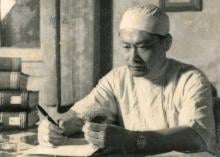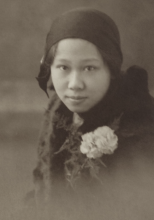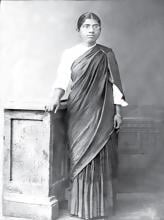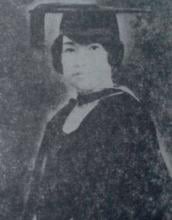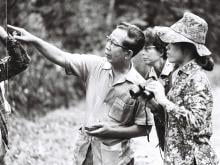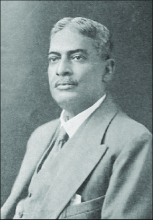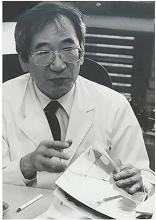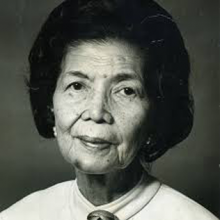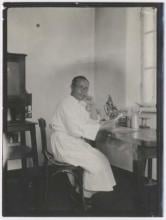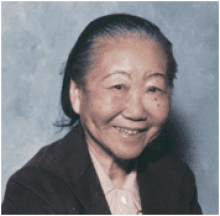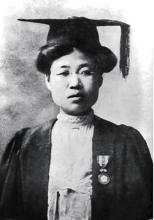Medicine
News

09 Oct 2005
NATURE AND THE NATURE RESEARCH JOURNALS PRESS RELEASE. For papers that will be published online on 9 October 2005

09 Oct 2005
New free full text journal launched at www.indianjournals.com

05 Oct 2005
R & D in animal health is the major activity of VRI, with special emphasis on livestock of economic and public health (zoonotic) importance. It also spearheads R&D of novel vaccines and biologicals for veterinary use.

05 Oct 2005
The 'Spanish flu' virus that killed about 50 million people in 1918-1919 had elements that were new to humans of the time, making it highly virulent and geneticists have compiled the genetic sequences of more than 200 different flu samples

05 Oct 2005
Summaries of newsworthy papers from Nature Vol.437 No.7060 Dated 06 October 2005 including How earthquakes trigger distant tremors; Fungus lets bacterial subtenant do the work; The staying power of neural stem cells; Male tears have sex appeal

05 Oct 2005
This study showed that existing Neonatal Intensive Care Unit environment has very high sound pressure levels. This can cause hearing impairment, sleep disturbances, somatic effects, impaired auditory perception and affect emotional development in babies.

05 Oct 2005
The I-ELISA is very suitable for large scale surveillance for avian influenza and can be used to detect antibody positive chickens if an outbreak of Avian Influenza Virus is suspected or for surveillance purposes post-outbreak at a particular location.

05 Oct 2005
In August 2004, the first HPAI virus was isolated in the state of Kelantan, Malaysia. From that time to July 2005, 35 HPAI viruses were isolated from at least 12 localities from this state.

05 Oct 2005
This paper discusses the measures that were put in place before, during and after the peak period of bird flu outbreaks in East Asia in early 2004.

05 Oct 2005
As the role that wild birds could play in spreading HPAI is far from clear, Wetlands International urges that more research is urgently done and a world wide system for monitoring HPAI in wild birds be put in place.

02 Oct 2005
Rabies, a serious health hazard, affects central nervous system of mammals and is caused by rabies virus. The rabies glycoprotein is an ideal candidate for use in the construction of a subunit marked vaccine.

02 Oct 2005
APCC 2005 will be held in Perth, Australia and the 4th Regional Training Course on Bioinformatics Applied to Tropical Diseases in Southeast Asia will be held in Bangkok, Thailand

02 Oct 2005
Press Release from the Nature Reviews Journals

02 Oct 2005
Nature Research Journals Press Release for papers published online on 2 October 2005

28 Sep 2005
Always thought of as addictive, nicotine is now shown to induce a progressive and long-lasting increase of sensitivity in the brain reward systems, reports an online publication from the journal Neuropsychopharmacology.

28 Sep 2005
Porous material has huge, handed holes; Understanding antibodies; The Dune thing; Diatoms delve deep for nutrients to stay alive; Human protein interactions go large scale; Corrupting the bacterial quorum; Quicksand won't suck you right in

28 Sep 2005
Poisoning is one of the major causes of morbidity and mortality in pediatric population. Majority of the patients were toddlers between the ages of 1 and 3.

25 Sep 2005
NATURE AND THE NATURE RESEARCH JOURNALS PRESS RELEASE - For papers published online on 25 September 2005

21 Sep 2005
Scientific understanding of flu, and avian flu, is being delayed by the reluctance of the US Centers for Disease Control and Prevention (CDC), the world's top public-health agency, to provide outside scientists with access to crucial data.

21 Sep 2005
Older adults in Cambodia have survived decades of political and social volatility including civil war and genocide. This analysis looks at a basic measure of health among a population that until recently has been isolated from the rest of the world.

19 Sep 2005
Universiti Putra Malaysia (UPM) researchers in collaboration with the Veterinary Research Institute, Ipoh, Perak, Malaysia have come up with a one step molecular based technique which can quickly identify the bird flu virus.

19 Sep 2005
The technique was evaluated using 20 different influenza A strains and was successful in identifying a series of different bird flu viruses.

18 Sep 2005
The courses aim to train young researchers on the tropical diseases of TDR portfolio (Malaria, Tuberculosis, Dengue, Leishmaniasis, Chagas’ disease, African Sleeping Sickness, Leprosy, Filariasis, Onchocerciasis and Schistosomiasis)

18 Sep 2005
NATURE AND THE NATURE RESEARCH JOURNALS PRESS RELEASE
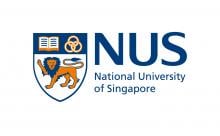
14 Sep 2005
At the National University of Singapore, Professor Gopalakrishnakone and his team have recently started working with the NUS Nanoscience and Nanotechnology Initiative on the use of quantum dots to deliver toxins to target areas.

14 Sep 2005
Nature Vol.437 No.7057 Dated 15 September 2005

14 Sep 2005
Population Council researchers recently completed studies in Pakistan and Nepal of attitudes and behaviors surrounding violence against women during pregnancy. These investigations were some of the first of their kind in South Asia.

14 Sep 2005
Snakebite is one of the common causes of death in rural and suburban areas of tropical countries such as India. In the present case, it was a mystery as to how the snake could bitten the victim at the back of the head.

14 Sep 2005
Bringing together local immunology talent to create an internationally competitive focus for research, teaching and scholarship in immunology

13 Sep 2005
Scientists from the National University of Singapore (NUS) are the first in the world to identify juxtanodin, a novel protein of the nervous system, and to reveal its biological functions in controlling the development of oligodendroglia.
Researchers
Sorry, no researchers coming up for this topic.
- « first
- ‹ previous
- 1
- 2
- 3
- 4
Giants in history
Vietnamese surgeon Tôn Thất Tùng (10 May 1912 – 7 May 1982) developed a pioneering technique that reduced the risks and mortality rate of liver operations.
Michiaki Takahashi (17 February 1928 – 16 December 2013) was a Japanese virologist who developed the first chickenpox vaccine.
Irene Ayako Uchida’s (8 April 1917 – 30 July 2013) strides to understand genetic diseases such as Down syndrome paved the way for early screening of chromosomal abnormalities in foetuses.
Baron Kitasato Shibasaburo (29 January 1856 – 13 June 1931) was a Japanese physician and bacteriologist whose work led to a new understanding of preventing and treating tetanus, diphtheria and anthrax.
Maggie Lim (5 January 1913 – November 1995) was a Singaporean physician who promoted family planning and expanded the access to clinics to improve the quality of life for mothers and children in Singapore’s early days.
By isolating soil microorganisms and studying the compounds they produce, Satoshi Omura (born 1935) discovered almost 500 organic compounds with unique properties that were produced by these microorganisms, including many new antibiotics.
The founder of the Adyar Cancer Institute in India, Muthulakshmi Reddy (30 July 1886 – 22 July 1968), fought to uplift women and girls from impoverished situations.
Chinese-American virologist and molecular biologist Flossie Wong-Staal (27 August 1946 – 8 July 2020) was the first scientist to clone HIV and determine the function of its genes.
Maharani Chakravorty (1937 – 2015) was one of India’s earliest molecular biologists whose research paved the way for advances in the treatment of bacterial and viral infections.
Archana Sharma (16 February 1932 - 14 January 2008) conducted research into plant and human genetics that expanded the understanding of both botany and human health. In relation to botany, she uncovered the means by which asexually-reproducing plants evolve into new species.
The first Thai woman to receive a degree in medicine, Margaret Lin Xavier (29 May 1898 – 6 December 1932), is best remembered for her compassion towards her less privileged patients.
In 1915, pathologist Katsusaburo Yamagiwa and his research assistant Koichi Ichikawa became the first to prove that chronic exposure to chemicals can cause cancer.
In 1915, Koichi Ichikawa along with pathologist Katsusaburo Yamagiwa became the first to prove that chronic exposure to chemicals can cause cancer.
Husband and wife team, Kimishige (3 December 1925 – 6 July 2018) and Teruko Ishizaka (28 September 1926 – 4 June 2019) discovered the antibody class Immunoglobulin E (IgE) that triggers allergic reactions. They also discovered that IgE antibodies attach to white blood cells, known as mast cells, releasing histamine, which causes allergic reactions.
Husband and wife team, Kimishige (3 December 1925 – 6 July 2018) and Teruko Ishizaka (28 September 1926 – 4 June 2019) discovered the antibody class Immunoglobulin E (IgE) that triggers allergic reactions. They also discovered that IgE antibodies attach to white blood cells, known as mast cells, releasing histamine, which causes allergic reactions.
Japanese chemist Takamine Jokichi (3 November 1854 – 22 July 1922) founded the Tokyo Artificial Fertilizer Company, where he isolated a starch-digesting enzyme (named takadiastase) from the fungus Aspergillus oryzae.
Ground-breaking cancer researcher Kamal Jayasing Ranadive (8 November 1917 – 11 April 2001) advanced the understanding of the causes of leukaemia, breast cancer and oesophageal cancer through the use of animal models. She was also among the first to recognise how susceptibility to cancer is linked to tumour-causing interactions between hormones and viruses.
The research of Filipino pharmaceutical chemist Luz Oliveros-Belardo (3 November 1906 – 12 December 1999) focussed on essential oils and other chemicals derived from native Philippine plants.
Thai physician and conservationist Boonsong Lekagul (1907 – 1992) made major contributions to the preservation of his country’s wildlife.
Indian scientist and physician Upendranath Brahmachari (19 December 1873–6 February 1946) is best known for creating a drug called Urea Stibamine, used to safely and reliably treat visceral leishmaniasis (or Kala-azar), a severe infection caused by the Leishmania parasite.
Filipino chemist and pharmacist Manuel A. Zamora (29 March 1870 – 9 July 1929) is best remembered for his discovery of the tiki-tiki formula to combat beriberi, a disease caused by Vitamin B1 deficiency.
Korean parasitologist Seung-Yull Cho (16 November 1943 – 27 January 2019) is remembered largely for his pioneering works to control infections caused by helminthic parasites and his contribution to journal publishing.
Fe Villanueva del Mundo (27 November 1911 – 6 August 2011) was a Filipina paediatrician who founded the Philippines’ first paediatric hospital.
After witnessing death and suffering as a youth in his home village during World War II, Nguyễn Tài Thu (6 April 1931 – 14 February 2021) set his sights on alleviating pain by becoming a doctor. After studying Traditional Chinese Medicine in China in the 1950s, Thu returned to Vietnam to serve in military hospitals. Eventually, he became the country’s foremost practitioner of acupuncture, a technique he first learned by inserting needles into himself.
Minoru Shirota (April 23, 1899 – March 10, 1982) was a Japanese microbiologist who invented the popular fermented drink Yakult.
Wu Lien-teh (10 March 1879 – 21 January 1960) was a Malaysian-born doctor who invented a mask that effectively suppressed disease transmission. Winning the prestigious Queen’s Scholarship enabled Wu to become the first Chinese student to study medicine at the University of Cambridge.
David T. Wong (born 1936) is a Hong Kong-born American neuroscientist who is best known for discovering the antidepressant drug fluoxetine, better known as Prozac.
Indian organic chemist Asima Chatterjee (1917 to 2006) studied the medicinal properties of plant products, especially compounds known as vinca alkaloids.
Chika Kuroda (24 March 1884 – 8 November 1968) was a Japanese chemist whose research focussed on the structures of natural pigments.
Umetaro Suzuki (7 April 1874 – 20 September 1943) was a Japanese scientist best remembered for his research on beriberi, a disease caused by vitamin B1 deficiency, characterized by limb stiffness, paralysis and pain.
Salimuzzaman Siddiqui (19 October 1897 – 14 April 1994) was an artist and chemist from Pakistan whose research focused on natural products from plants.
Barry Paw (29 August 1962 – 28 December 2017) was a biologist and oncologist who discovered several novel genes and their functions in red blood cells.
Syed Qasim Mehdi (13 February 1941 – 28 September 2016) was a Pakistani molecular biologist who was a founding member of the Human Genome Diversity Project (HGDP), which assessed human diversity by studying human migration, mutation rates, relationships between different populations, genes involved in height and selective pressure.
Tsai-Fan Yu (1911 – 2 March 2007) was a Chinese-American physician and researcher who was the first female full professor at Mount Sinai School of Medicine. She discovered that gout, a condition characterized by the painful inflammation of joints, was caused by elevated levels of uric acid in the bloodstream.
Min Chueh Chang (10 October 1908 – 5 June 1991) was a Chinese-American biologist who studied fertilization in mammalian reproduction.
A Japanese surgeon, Tetsuzo Akutsu (20 August 1922 – 9 August 2007) built the first artificial heart capable of keeping an animal alive.
Ogino Ginko (3 March 1851 – 23 June 1913) was the first registered female doctor to practise modern medicine in Japan.
Esther Park (1877-1910), born Kim Jeom-dong, was the first female Korean physician to practise modern medicine in Korea and trained the first generation of Korean female doctors.


